The previous Audi Q3 was like an archetype German businessman. Practical, at times harsh, and ruthlessly efficient, it was the kind of SUV that was good at meeting its KPIs.
Now, though, we’re greeted by an all-new-generation Q3. It’s a bit more fun, a bit more rebellious, a lot more high-tech, and, alarmingly, it looks up to SUV rock stars like the Lamborghini Urus.
But as much fun as it all might seem, the Q3 has an important job, and that’s to carry Audi’s premium small-SUV message to a new generation of buyers, as well as the sensible last-gen Q3 fan. Audi even has big hopes that this car will be over-represented in its 2020 sales mix.
No pressure, then. Can the youthful new Q3 really take on all that’s been asked of it? Read on to find out.
Audi Q3 2020: 35 Tfsi S Tronic
| Engine Type | Turbo 4, 1.4L |
|---|---|
| Fuel Type | Premium Unleaded Petrol |
| Fuel Efficiency | 7.2L/100km (combined) |
| Seating | 5 |
| Price From | $34,980 - $41,690 |
| Safety Rating |
|
Is there anything interesting about its design?
8 / 10
I mentioned the Lamborghini Urus before, because there are more than a few little nods to Audi’s Italian subsidiary in the new Q3’s design. These stem from the larger Q8’s bold design language and will make themselves even more apparent in the upcoming Q3 Sportback (due later in 2020). Here in the regular hatch, the aggressive, angular influences are still subtly apparent.
.jpg)
It’s just a lot more fun to look at than its predecessor, yet the hatch at least runs the fine line of not looking too controversial for fans of the more conservative, outgoing model.
Highlights include the new grille, rhomboid air dam bits around the edges, a lower splitter and Audi’s new upright grille, which unites its SUV range.
Down the sides there are the strong bulges over the wheel arches, on the body line above the doorhandles and, from the rear, a progression of the previous car’s bulbous edges, now with a more angular bent.
.jpg)
The LED headlights tie the front end together in style. The pictures somehow don’t quite do it justice, because it’s even nicer to look at in the metal.
The inside is where the real wow factor is, however, with the Q3 presenting an almost shrunken-down version of the Q8’s tech-laden interior. It’s nice to see a strong design theme here, with a dash that cascades down in layers, centred by an asymettrical multimedia interface, and a massive 10.1-inch screen, tipped slightly towards the driver.
It’s in danger of looking busy, but somehow all the parts and disparate materials work together nicely. It’s probably do do with the way all the hexagonal silver frames complement each other, as well as the surrounding switchgear.
.jpg)
It’s a lovely place to be, surrounded by such slick design, but it’s not without its flaws. Chinks in the Q3’s luxurious armour include the oddly tall gear knob, which looks like it would be more suited to a $20k Volkswagen Polo, and the abundance of firm surfaces around your knee and elbows.
Does it represent good value for the price? What features does it come with?
8 / 10
The Q3 needs to plug an important gap in Audi’s lineup where it’s losing sales to recently launched competitors. These include the BMW X1 or X2, the Lexus UX, and the Mini Countryman.
There’s also a new Mercedes-Benz GLB on the way, plus a new-generation GLA, so keep an eye out for those. Audi will be.
Price-wise, the Q3 enters Australia in just one variant, the entry-level, petrol-powered 35 TFSI, offered at an MSRP of $46,400.
Competitors at that price include the BMW X1 sDrive 18i ($44,500), the Mini Countryman Cooper ($42,200), and the Lexus UX200 Luxury ($44,450).
While it’s marginally more expensive than its entry-level, luxury small-SUV competitors (and about on par for power, too) it’s the standard equipment list that truly shines in the Audi.
Even this entry-level Q3 gets 18-inch alloy wheels, a 10.1-inch multimedia touchscreen, built-in sim card supporting online sat-nav, a wireless hotspot and over-the air updates for three years, Audi’s signature 10.21-inch digital dash, Android Auto connectivity and wireless (!) Apple CarPlay, complete with a wireless-charging bay, dual-zone climate control, real leather interior trim, an electronic tailgate with gesture control, and full LED front lighting.
.jpg)
Deep breaths. Did you get all that? There’s no subscription required for the wireless Apple CarPlay (I'm looking at you, BMW) and it’s particularly impressive to see the electric tailgate as a standard inclusion. Audi says the new Q3 ships with $12,000 worth of inclusions over its outgoing equivalent. Not bad at all.
My biggest complaint with the entry-level configuration was the somewhat non-premium feeling of the manually adjustable seats.
Electrically adjustable seats are part of the Q3’s remarkably short options list, which consists (for now) of the ‘Style Package’ ($1900), which includes 19-inch wheels, full colour body paint (removes the contrast black bits), and aluminium highlights, or the ‘Comfort Package’ ($2600), which includes electrically adjustable heated front seats, auto-folding and dipping wing mirrors with an electro-chromatic (auto-dimming) rear-vision mirror, and adaptive cruise control.
Alternatively you can bundle some of those bits together with the limited “Launch Edition” variant ($52,750), which includes a unique 19-inch-alloy design, metallic paint, privacy glass, auto-folding and dimming mirrors, customisable interior LED lighting, electrically adjustable and heated seats, a 360-degree parking suite, and adaptive cruise control.
.jpg)
The only other standalone options are limited to a Bang & Olufsen premium audio system ($900) and a panoramic opening sunroof ($2250).
Expect that lineup to get more complicated with the launch of 2.0-litre, all-wheel-drive and RS variants, as well as a Sportback body style later in 2020.
For now, though, the Q3 justifies its slight extra spend over its competitors with an impressive list of standard inclusions.
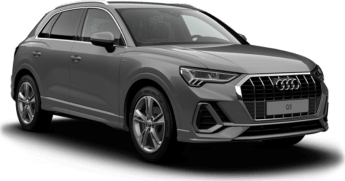
How practical is the space inside?
9 / 10
Put simply, the Q3 is brilliantly packaged. Sure, it’s bigger, having grown its wheelbase by 77mm over the previous model, but it really makes the most of every extra millimetre.
Front passengers get a customisable space, with plenty of movement in the front seats (despite that lame manual adjustment) and a fully telescopically adjustable steering column. Visibility is excellent for the driver, with big, upright glasshouse-like windows and chunky mirror fittings.
All the digital displays are fast to operate and present slick designs, but a few shortcut buttons would have been welcome for the multimedia system. I was pleased to see that Audi has stuck with analog dials for quick and easy control of the dual-zone climate system.
Storage areas for front passengers include large bottle holders in each door card, dual bottle holders in the centre console - with a neat slot separating them, suited to a phone - a Qi wireless charging bay in front of the geark nob, also suited to wallets and phones, as well as your standard-fare glovebox and a smallish centre console.
All seats get leagues of headroom, and there was still great legroom behind my own driving position in the back seat ( I’m 182cm tall). That said, the Q3 is more of a four-seater for adults. The centre rear seat is truly tiny, and legroom is interrupted by the transmission tunnel, which will facilitate all-wheel drive in future variants.
.jpg)
The rear seats also get those big bottle holders in the doors, as well as a set of adjustable air vents, a 12-volt power outlet and two USB-C outlets on the back of the centre console.
Saving the most impressive Q3 practicality trick for last, we come to its luggage area. At a minimum, with the rear seats in their default position, it weighs in at 530-litres (VDA). That’s a lot more than the BMW X1, X2, Benz GLA, Lexus UX or Mini Countryman. In fact, it’s easily playing in a load area in the segment above. The only luxury small SUV that pips it here is the much more expensive Range Rover Evoque.
But that’s not all, because the Q3 has its second row of seats on rails, meaning – if your passengers don’t need any semblance of legroom - you can expand it to well over 600L, or with the seats down, a maximum of 1525L. That's massive.
.jpg)
The luggage shelf can also be stowed under the boot floor – where an unfortunate compromise lies in the form of a space-saver spare. It would be nice to see a full-size spare for the Australian market.
What are the key stats for the engine and transmission?
6 / 10
For now the Q3 is available with only one engine option, a 1.4-litre, four-cylinder turbo producing 110kW/250Nm. Although power figures are on par with its main competitors, it still feels underwhelming for a premium product.
.jpg)
The 35 TFSI drives the front wheels only via a six-speed version of the brand’s ‘s-tronic’ dual-clutch automatic.
A more powerful 2.0-litre petrol engine with a seven-speed dual-clutch and all-wheel drive (the 45 TFSI Quattro) will arrive later in 2020, but the 2.0-litre 35 TDI diesel available overseas has been ruled out for Australia.
How much fuel does it consume?
7 / 10
It would seem unfair to comment on the 35 TFSI’s fuel usage over our brief and enthusiastic drive program around Byron Bay.
This engine and transmission combination produces an official combined-fuel-consumption figure of 7.2L/100km for the base car with no inclusions, or 7.3L/100km in the Launch Edition trim.
For the record, our two-day drive program had most cars producing figures around the 8.0L/100km mark. Competitors claim lower numbers but are measured to a previous, more lenient official measurement standard.
The Q3 has a stop/start system to help trim fuel usage down in traffic.
What's it like to drive?
7 / 10
This new Q3 manages to feel lighter, more agile and more engaging behind the wheel, despite its engine, which had to try rather hard to keep up with the demands on our drive program.
There's quite often a second of turbo-lag to deal with, or a slightly reluctant transmission finding the right gear when you blast around a corner. Once that turbo peak torque does arrive, however, the Q3 skips ahead at a decent pace, befitting its new look and sporty demeanour.
For everyday sort of driving scenarios it’s powerful enough, but at freeway speeds it does feel like the engine has little in reserve for those moments where you need a burst for overtaking.
The engine itself is reasonably quiet, only revealing a satisfying bumble past about 4000rpm, but road noise was worse than I expected, even on the smallest 18-inch wheels.
.jpg)
The steering is excellent. It’s light, but full of feel in the corners, and confidence in the twisty stuff is backed by independent rear suspension.
Similarly to the previous-generation Q3, the suspension tune is hard. Combine that with the Q3’s newfound light feel and it’s almost as though you’re piloting a very upright hot hatch.
This proved entertaining for blasting around country B-roads, as we did at the launch, but I could easily envision the springy and at times crashy ride getting tiresome on routine commutes.
It has to be said that many buyers looking to a premium SUV will be looking for that sporty feel, despite being a bit at odds with the 35 TFSI’s base engine.
Again, we’ll be keen to get our hands on the incoming all-wheel-drive variants, as well as optional adaptive dampers, which will be available later in 2020.
Warranty & Safety Rating
What safety equipment is fitted? What safety rating?
8 / 10
The Q3 now scores the all-important set of active items as standard across the range, including auto emergency braking (AEB – works from 5km/h to 85km/h for pedestrians or cyclists, and up to 250km/h for vehicles), blind-spot monitoring (BSM), lane-keep assist (LKAS) with lane-departure warning (LDW), Rear cross-traffic alert (RCTA), and driver-attention alert (DAA).
Sadly, active cruise control lives on the options list as a part of the ‘Comfort Package,’ or as standard on the Launch Edition.
The Q3 was awarded a maximum five-star ANCAP safety rating in time for its launch, sporting six airbags as well as the expected stability and brake controls.
While it might not have as comprehensive an active-safety suite as some non-premium cars, it’s still well ahead of the BMW X1 and Benz GLA, while falling on a par with, or just ahead of, the Mini Countryman and Lexus UX.
What does it cost to own? What warranty is offered?
7 / 10
Audi, along with many other premium automakers, lags behind the industry-accepted standard with a lacklustre three-year, unlimited-kilometre warranty. BMW is sticking with a similar promise and, unsurprisingly, so is Mercedes.
Lexus is only marginally better, with four-year coverage. It would be nice to see a premium manufacturer take some initiative here (especially since much of the Audi running gear is the same as the VW stuff, which is covered by an extra two years of warranty).
The Q3 will need to be serviced once a year or every 15,000km and capped-price servicing is covered by pre-packaged ‘Service Plans,’ which can be purchased at the same time as the vehicle. Pricing is TBA on the new Q3, but the previous one cost $1610 for three years or $2590 for five. That's premium-car cheap.
Verdict
Audi’s new Q3 feels fresh, high-tech, and polished. All things the small SUV will need to be as the brand places ambitious hopes on its little shoulders.
As it is now one of the most spacious small SUVs in the premium segment, it also proves you don’t have to sacrifice practicality for luxury.
While this entry-level 35 TFSI ships with a so-so engine, keep in mind that it is far from the definitive Q3 experience. There’s much more to come with the rest of the range, later in 2020.
Note: CarsGuide attended this event as a guest of the manufacturer, with travel and meals provided.
Pricing Guides




.jpg)
.jpg)




















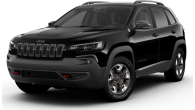
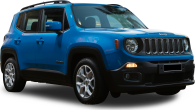














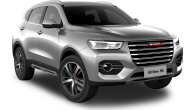

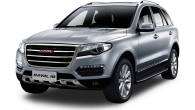



 copy.png)

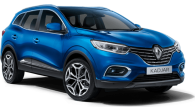




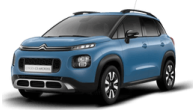







_1.jpg)
.jpg)





.jpg)

Comments